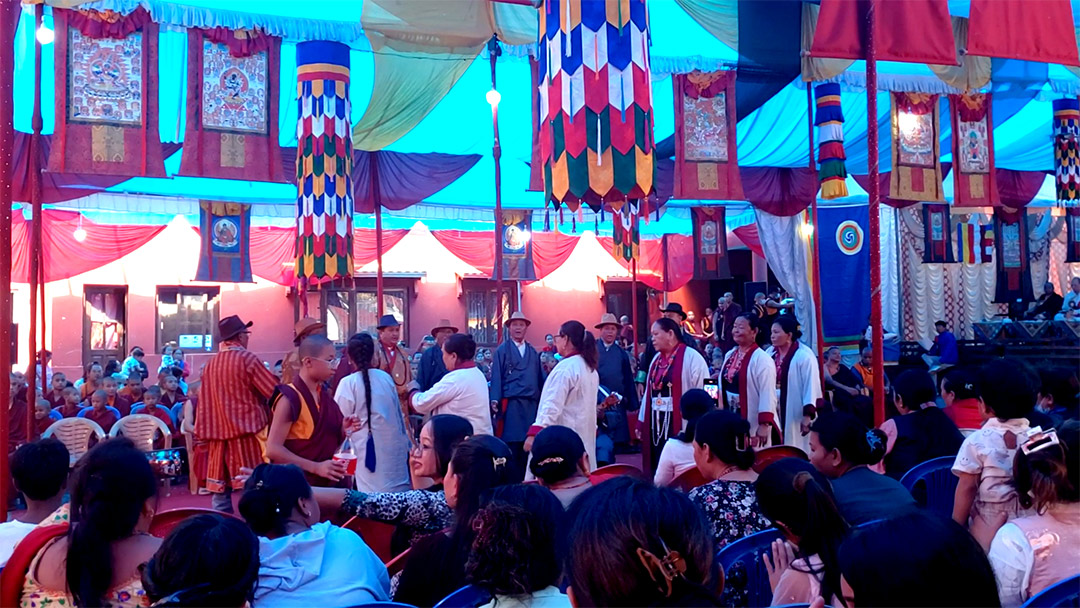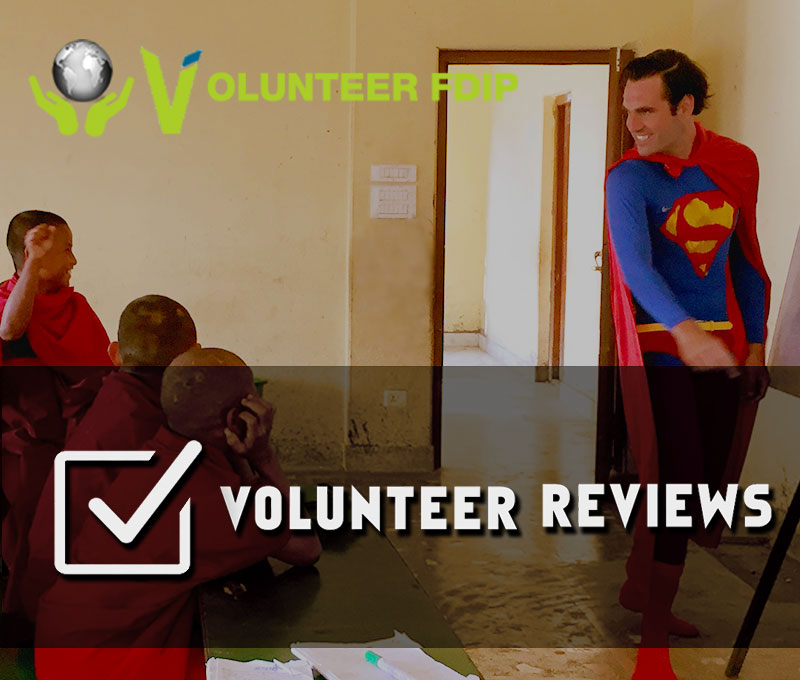What Is the Language of Nepal?
Last Updated: February 23, 2025
Tweet
Are you planning a visit to Nepal and wondering what language the locals speak? Are you curious about how a nation nestled in the Himalayas has evolved to have such diverse linguistic roots? Then, this blog is all about unraveling the colorful tapestry of languages spoken in Nepal, especially focusing on why Nepali is considered the official language but also highlighting other major languages, including English.
Volunteering or traveling abroad isn’t just about visiting a new place, it’s about truly connecting with people, and understanding their language is the best first step. Let’s dive into the multilingual world of Nepal!
Nepal as a Multilingual Country
Nepal has always been a nation of immense cultural and linguistic variety. The country’s constitution recognizes all mother tongues spoken in Nepal as national languages. Among these, Nepali enjoys the status of the official language and is spoken and understood by virtually all Nepalis. Historically, ancient Nepal saw the development of languages such as Kirant, Sanskrit, and Pali, while scripts like Brahmi, Sirijangha, Devanagari, and Ranjana flourished.
With the passage of time, these languages evolved and influenced one another:
- Sanskrit experienced significant development, especially during and after the reign of Jayasthiti Malla.
- Newari (spoken predominantly by the Newar community) rose to prominence in the Kathmandu Valley in the medieval era.
- Urdu and Persian made their mark during the entry of Muslim traders.
- In royal courts, it wasn’t uncommon to meet people who understood multiple languages, from Sanskrit to Parbate (another name for Nepali), and even Maithili or Bengali.
Today, Nepal’s unique linguistic profile includes a long list of regional languages. Let’s break down some of the main ones that you’re likely to encounter during your travels or volunteer experience.
Please click here to get the complete details on available trips, destinations, accommodation, cost and the rest of it.
Get More Info Now »
Nepali Language
If you’re asking, “What is the language of Nepal?” the first and foremost answer is Nepali. Historically part of the Indo-European (Bharopeli) language family, Nepali evolved from Sanskrit, Prakrit, and other related tongues. It holds many important functions:
- National Language: Used from the Eastern border (Mechi) to the Western border (Mahakali).
- Administrative Medium: Employed in government offices and legal documents.
- Language of Education: An integral part of the curriculum across Nepal.
- Communication & Publication: Widely used in mass media, newspapers, and radio broadcasts.
According to the 2068 BS National Census, 44.86% of Nepal’s population claims Nepali as their mother tongue. Moreover, countless others speak it as their second or even third language. It’s not just confined to Nepal’s borders,Nepali-speaking communities are found in parts of India, Bhutan, and even Burma.
Maithili Language
Maithili is the second most widely spoken language in Nepal, accounting for 11.05% of the population (2068 BS census). Originating from the Magadhi Prakrit variant of Sanskrit, it gets its name from the Mithila region where it thrives. Maithili is used prominently in the eastern Terai region,Rautahat, Sarlahi, Mahottari, Dhanusha, Sirha, Saptari, Morang, Sunsari, and Jhapa districts.
- Script: Historically written in Tirhuta, but nowadays Devanagari script is common.
- Contemporary Use: Literature, newspapers, films, television, and radio broadcasts.
Bhojpuri Language
Bhojpuri also traces its roots to the Magadhi Prakrit family. Named after the ancient Indian city of Bhojpur, this language finds its Nepali stronghold in Bara, Parsa, Rautahat, Chitwan, and Rupandehi districts. While Bhojpur District in Nepal shares its name, there’s no linguistic link between the district and the Bhojpuri language itself.
- Script: Originally Kaithi, but now mostly Devanagari.
- Speaker Base: 6.7% of Nepal’s total population (2068 census).
- Literary Wealth: Known for its folk literature and cultural richness.
Newari Language
If you’ve walked through the bustling streets of Kathmandu, visited the historical alleys of Patan, or trekked around Bhaktapur, you’ve probably heard Newari in the air. Spoken by the Newar community, its roots lie predominantly in the Kathmandu Valley,yet its presence extends to Dolakha, Kavre, Ramechhap, Sindhuli, and beyond.
- Scripts: Historically used Qomol, Golmol, Bhunjimol, Ranjana, Lutimol, but modern usage relies on Devanagari.
- Cultural Richness: Newari has its own newspaper publications, films, telefilms, songs, and a rich literary tradition.
- Current Usage: About 3.20% of the population (2068 census) are native speakers.
Sherpa Language

When you imagine Nepal’s towering peaks,Everest, Lhotse, Makalu,you also picture the warm smiles of the Sherpa community. The Sherpa language belongs to the Tibetan–Burman family, closely related to the Tibetan language.
- Geographical Distribution: Primarily in Solukhumbu, but also in Himalayan districts like Humla, Manang, Mustang, Dolakha, and Ramechhap.
- Speaker Proportion: 0.43% mother tongue speakers (2068 census).
- Cultural Ties: Intimately linked with the Sherpas’ mountaineering heritage and Buddhist traditions.
English Language
While Nepal has a deep linguistic heritage, English is making an ever-stronger appearance:
- Urban Usage: Spoken widely in Kathmandu, Pokhara, and other major cities, especially in the education, tourism, and business sectors.
- Second/Foreign Language: Though the 2021 census shows a small number of native English speakers, a far larger group uses English as a second language.
- Global Relevance: As Nepal grows its global connections, through volunteer programs, business expansions, and tourism,English continues to carve its space.
It’s one of those languages that you’ll hear on busy streets, in higher educational institutions, and among young Nepalis eager to expand their international prospects.
In a Nutshell: Embracing Nepal’s Linguistic Heritage
Nepal’s linguistic landscape is as diverse and rich as the country’s geography, spanning the mighty Himalayas, the rolling hills, and the bustling Terai plains. Nepali may be the face of official work and communication, but languages like Maithili, Bhojpuri, Newari, Sherpa, and a host of others carry the soul of the nation’s culture and identity. And don’t forget the rising use of English, especially if you’re visiting for travel, volunteering, or study.
No doubt, whether you’re trekking through remote villages, mingling in Kathmandu’s cafes, or volunteering in a community school, understanding even a few local phrases can help you connect in profound ways. After all, language is the key to unlocking stories, forging friendships, and truly being there for the people you meet along your journey.
Please click here to get the complete details on available trips, destinations, accommodation, cost and the rest of it.
Get More Info Now »
Frequently Asked Questions (FAQs)
1. Is Nepali the only official language in Nepal?
Nepali is the official language of Nepal, but all mother tongues spoken in Nepal have national recognition according to the country’s constitution.
2. How many languages are spoken in Nepal?
Nepal is home to more than 100 languages. While Nepali is dominant, regional tongues like Maithili, Bhojpuri, Tharu, Tamang, Newari, Sherpa, and many more enrich its linguistic mosaic.
3. Is English widely used in Nepal?
Yes, English is common in urban areas, schools, and tourism-related fields. Although native English speakers are few, many use it as a second or foreign language.
4. Do I need to learn Nepali before visiting or volunteering in Nepal?
You don’t need to be fluent in Nepali or other local languages, but learning basic greetings and phrases can be incredibly helpful for deeper cultural connection and day-to-day activities.
If you plan to volunteer or explore Nepal, remember that each local language you encounter holds a key to understanding the heart of the community. When you speak even a few words of their language, you share more than conversation,you share respect, empathy, and genuine warmth.
Please click here to get the complete details on available trips, destinations, accommodation, cost and the rest of it.
Get More Info Now »







